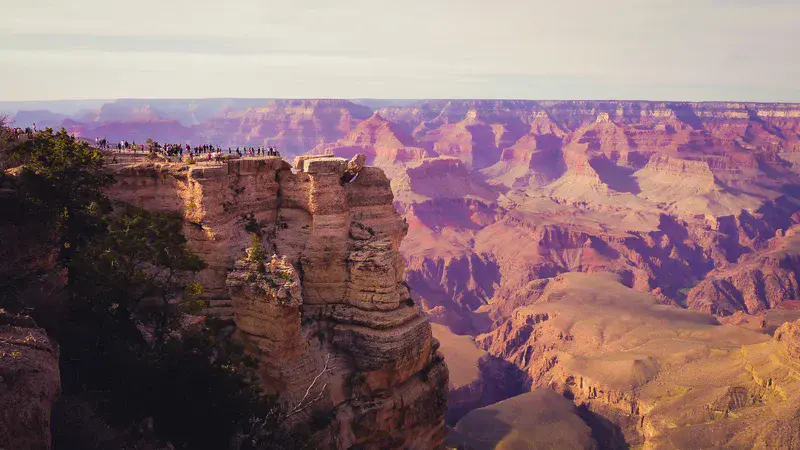
Great Depths Below Us
by Sergio Pérez, Sevilla, España
The Grand Canyon really is unimaginably huge in size. Few places have left me in such awe, knowing that just a few steps in front of you there is an 800 meter drop down to the base of the canyon, which continues for six kilometers at its least and 29 at its most. When you first visit the canyon, it is as if you are walking on the border of an unending, red-colored abyss.
And what is perhaps most astounding of all is that, despite the lack of fertile soil and rain, life still manages to exist on top of the cliffs and crags of the never-ending red landscape.
Category
Location
- North America (59)
- Exact location (-112.1162 W, 36.0934 N)
Tags
Colours
Image properties
4320 × 2432 px;
image/jpeg; 2.5 MB
Camera:
Panasonic DMC-TZ8
Taken on 20
September
2017
Submitted on 22 May 2018
Licence
Creative Commons Attribution 3.0 Unported (CC BY 3.0)
Credit
Sergio Pérez (distributed via imaggeo.egu.eu)
Share
Appreciate
Report
Antonio Jordán 7 years, 7 months ago
The Grand Canyon began to form about six million years ago due to the lateral erosion of the Colorado River, when the elevation increased the potential energy of the river course. The river is still actively eroding its bed, bringing out increasingly old rocks. Soils are mostly sandy and sallow, and erosion processes are very intense in the area. Here, biological crusts (lichens, fungi and others) play an important role for soil protection.